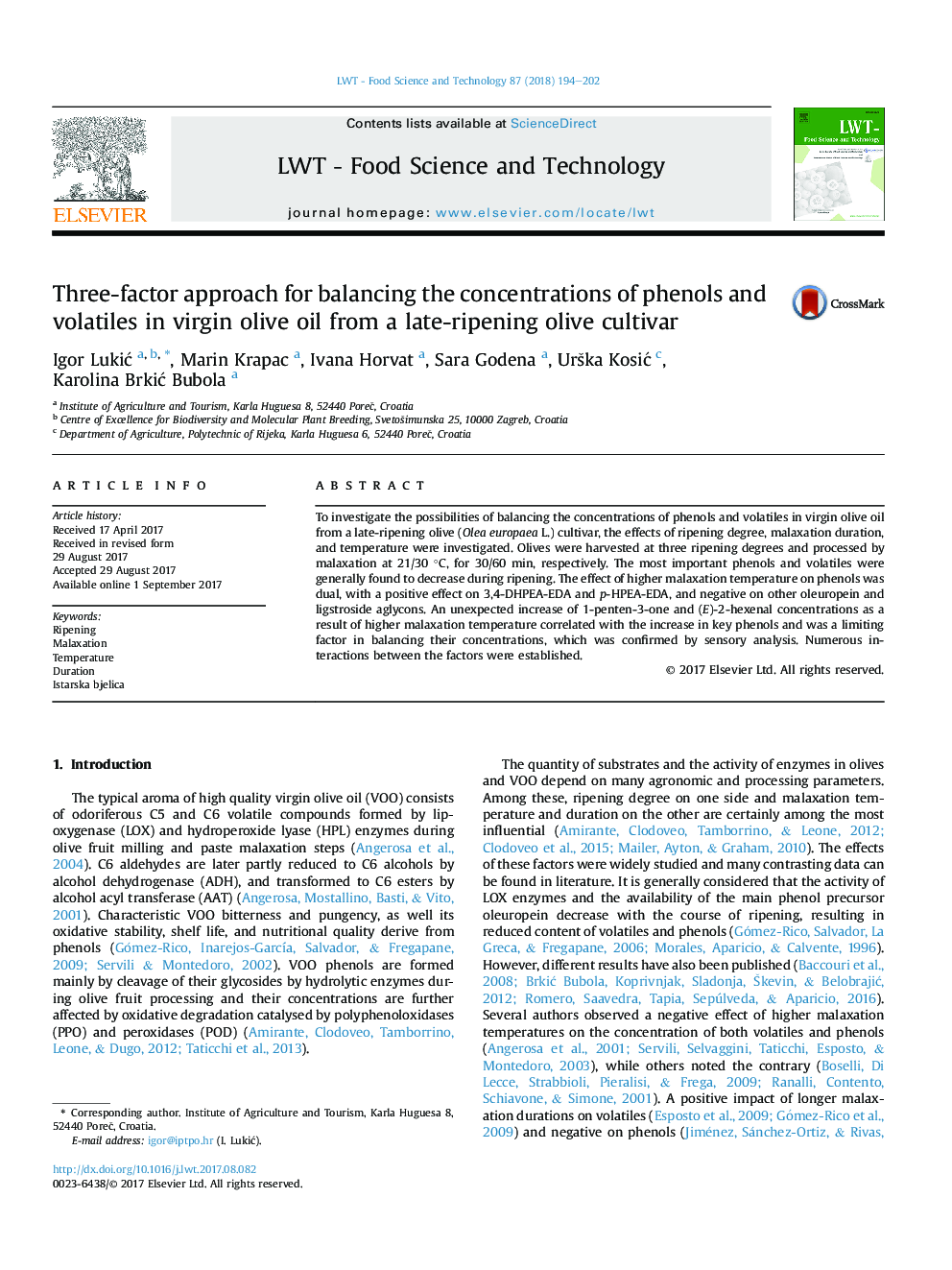| Article ID | Journal | Published Year | Pages | File Type |
|---|---|---|---|---|
| 5768606 | LWT - Food Science and Technology | 2018 | 9 Pages |
â¢Ripening degree exhibited the strongest, and malaxation duration the weakest effect.â¢The effect of malaxation temperature on secoiridoids was dual.â¢Unexpected effect of temperature on 1-penten-3-one complicated balance with phenols.â¢Many significant interactions between three factors were observed.â¢Intensities of positive odour and taste sensory attributes correlated strongly.
To investigate the possibilities of balancing the concentrations of phenols and volatiles in virgin olive oil from a late-ripening olive (Olea europaea L.) cultivar, the effects of ripening degree, malaxation duration, and temperature were investigated. Olives were harvested at three ripening degrees and processed by malaxation at 21/30 °C, for 30/60 min, respectively. The most important phenols and volatiles were generally found to decrease during ripening. The effect of higher malaxation temperature on phenols was dual, with a positive effect on 3,4-DHPEA-EDA and p-HPEA-EDA, and negative on other oleuropein and ligstroside aglycons. An unexpected increase of 1-penten-3-one and (E)-2-hexenal concentrations as a result of higher malaxation temperature correlated with the increase in key phenols and was a limiting factor in balancing their concentrations, which was confirmed by sensory analysis. Numerous interactions between the factors were established.
